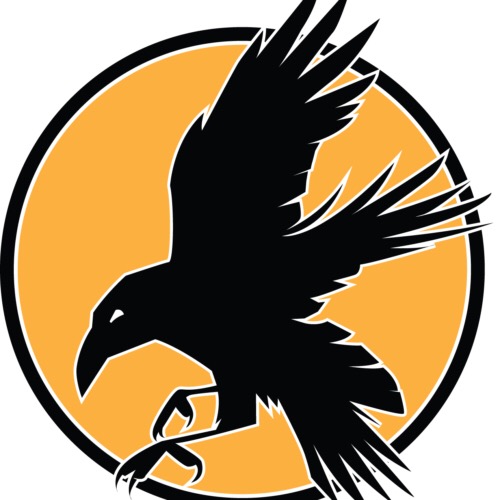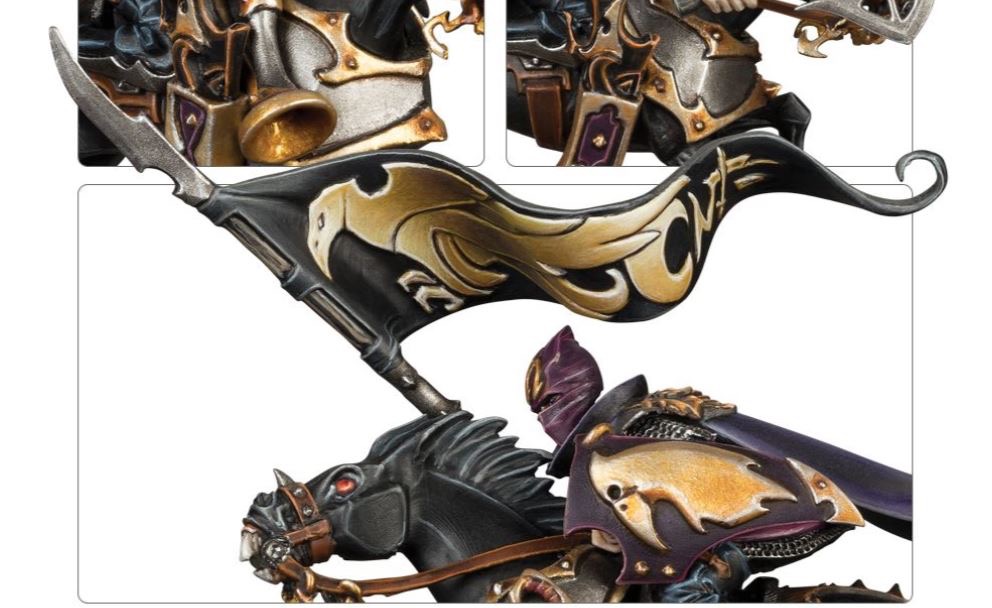While I am getting back into the swing of things, I thought I would post a copy of my first article on Warhammer Community on incorporating narrative within your next Age of Sigmar army project. You can find the article here.
With a new edition of Warhammer often comes the desire to start a new army or hobby project. In this article, I’ll be exploring the narrative side of Warhammer: Age of Sigmar and giving some practical tips on how to weave a story into your next project.
For me, Warhammer has always been about stories – two players spending time together to share an experience. For some, the idea of narrative play or sketching out a background for an army can be daunting, but a narrative can also be engaging, collaborative and rewarding, without being a burden or barrier to fun.
Getting inspired
Inspiration can be found in many places:
- a particular model – maybe the Everqueen herself, a schemer such as Morathi or the mysterious Lady Olynder
- a lore snippet or character in a battletome or Black Library work
- a game that you played – a previously unnamed character may earn a story based on their exploits in battle
- a hobby goal – a desire to try new colour schemes, or to improve your conversions
- an existing aesthetic – maybe something from history or folklore
Inspiration can be fickle, though, so how do you increase the chances that a great idea will strike? One method is to expose yourself to the creative work of others – follow other hobbyists on social media, trawl Google image searches, read Black Library stories and cross-pollinate from art, film or other fantasy series. You’d be surprised how often a great hobby idea will hit you while doing something completely different.
Along the way, collect your ideas together – vision boards (either physical or digital) are an excellent way to gather your project ideas in one place. Here is mine for my Free City in Shyish.

Developing your narrative
Once you have your idea, how do you develop it and flesh it out? For me, the best way is to focus on motivations and ask primary questions: why, where, how etc:
- Who is your central character? That character might be an individual, a group, or even a city.
- Where have they come from? What is their past? How has that past influenced them to be what they are now?
- How is the character connected to others? Friends, family and enemies. Who are they loyal to?
- What is the character’s social class? Where do they sit in wider society?
- Does the character have a signature item, trait or behaviour? This item doesn’t have to be a mighty weapon, but could be a simple tool, keepsake or relic. What’s the history of that item, where did it come from? Why is it treasured?
- What is motivating the character now and guiding future action? What are their aims?
- With whom might the character interact in achieving those aims? How do those third parties react to your character?
You don’t need to know all the answers to these questions to start. An effective narrative can sprout from just a couple of strong hooks and immediately compelling points. Leave yourself open space for future development and character exploration. There is a balance to be struck between broad strokes and fine details.
Filling in the details
There are plenty of resources that can help you work on the details. Name generators and sites listing the origins of names are very useful. For my projects I often create portmanteau words from Old Norse, Old English and Celtic – Draumhafn (“Dream Haven”) is the name of my Free City in Shyish. It seemed an apt name in this time of portents. There are also map and colour scheme generators for fleshing out your ideas.
Collaboration drives narrative development
While these resources help provide raw material, narratives are best developed between people. Share your ideas with your local gaming group or with other like-minded gamers. These discussions can explore possibilities that you may never have considered alone. The experience can also be incredibly motivating, just as setting goals to paint your army can help you achieve that goal, sharing ideas drives on your hobby project.
I shared the ideas behind my Draumhafn force with a number of friends, who all contributed their time to discuss the background with me. Draumhafn has emerged as a large maritime port in Shyish built on trade with aelves. The city has an outpost of the Anvils of Heldenhammer, as well as scrying towers and auguries. A Kharadron Overlords skyport, Barak Stil, is assisting the city’s Collegiate Arcane in searching the skies for portents of Nagash’s works as times become desperate (this narrative was developed before the Necroquake and the rise of the Nighthaunts).
Applying the narrative to your army
If you have a background, you can express that in your models. It can be as simple as naming the hero or unit and providing a short background, modelling on a prized possession or weapon, or a complete scratch build to meet the vision in your head (check out the Warhammer Community team’s Free City armies). Consider starting a separate project bits box, just for interesting pieces which could fit the theme of your army.
A common image – banners, shields and symbols
A shared theme or symbol is an effective way of producing a cohesive army with a shared sense of identity around your narrative. For Draumhafn, its symbol is the raven surrounded by a circle of thorns and it has a black and yellow colour scheme. As a result, I’ve been collecting as many spare Dark Rider shields and banners as possible to produce a cohesive army, despite the intended kit-bashes.
A reason for conversions
My narrative has also driven my Celestial Hurricanum conversion based on a Kharadron Overlords Frigate. In exchange for a substantial payment, the captain of the skyvessel agreed to replace the front buoyancy endrin with a device produced by the city’s collegiate arcane in order to scry the heavens for portents. The vessel is crewed by the ship’s captain, his trusted navigator in the rear endrin (no self-respecting captain would leave his navigator), and representatives from the city’s collegiate arcane and engineer’s guild.

Advancing your narrative
Finally, it is important to remember that a narrative or background never stands still – it will evolve as your initial idea interacts with the models you build and the games you play.
It can help to bear in mind the classic staple of story-telling which is the hero’s journey. Your hero starts in the “known” – the elements that you have worked on above, the call to adventure, the hero’s background etc. However, as your hero moves into the unknown they will encounter helpers and challenges.
With the new Core Book and General’s Handbook 2018, there are so many ways that you can realise your narrative on the table-top. You could start with Skirmish or Path to Glory campaigns, you could run a number of small games on the same weekend or evening, or run a slow grow tree campaign complete with maps and territories (either in a physical form or electronic). As games progress, you can convert your models to reflect the ongoing story. Add trinkets, battle trophies, scars and more. You may also wish to take your army or warband on campaign to a Narrative event such as Realms at War, Warhammer Achievements or your local Coalescence event.
If you run a campaign, think about how you can interlink your narrative with the others in your campaign. Drive the characters’ motivations off each other and compete over a common objective. Record key moments from games and the narrative either in notebooks or a blog. Use the time between games to revisit the narrative, consider next moves, and explore the wider landscape. To help, you may wish to have one person take responsibility for overseeing the group’s story development and ensuring that the games help integrate the group’s ideas and ambitions.
Good luck!
Hopefully this has given you some ideas for incorporating narrative into your next Warhammer Age of Sigmar project. Just remember, narrative can be as small or as comprehensive as you wish, and is always better with friends.



Leave a Reply
You must be logged in to post a comment.